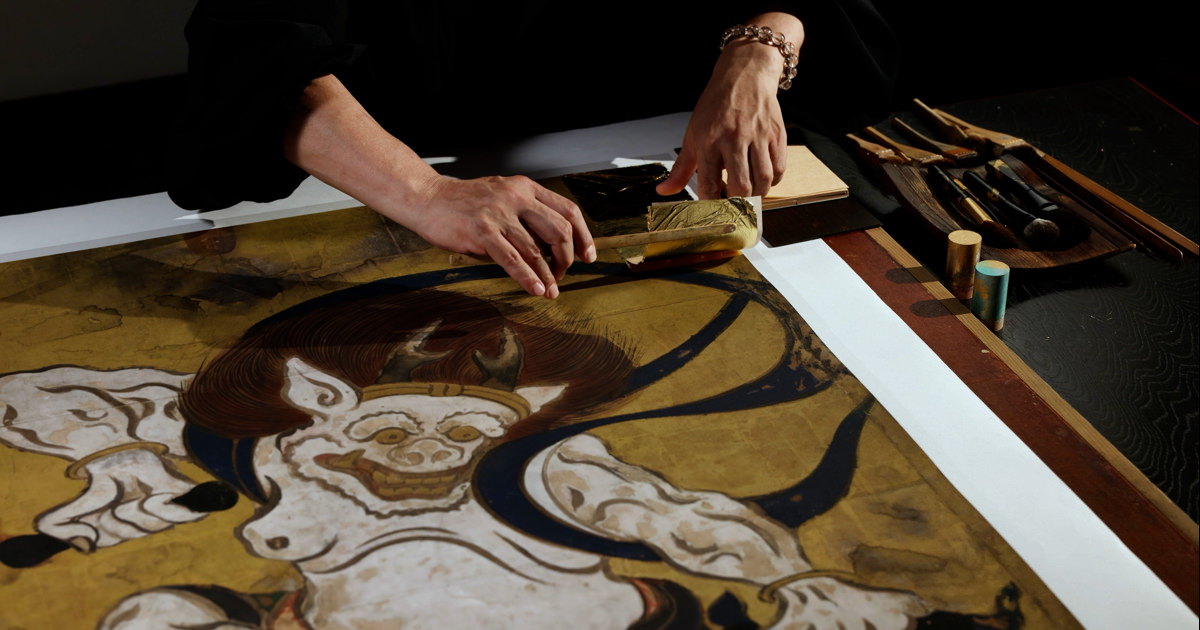These images are based on the high resolution facsimile produced by the Joint-research Project with CPCP. Unauthorized copying, duplication, or transfer of these images is strictly prohibited.
*This work was produced as Agency for Cultural Affairs “FY2021 Project for the Promotion of Regional Development of Cultural Resources with Local Ties (Cultural Resource Content Creation Project Using Advanced Technology)” as part of the Joint-research Project with CPCP.
Outing in Mountains and Fields
High-resolution facsimiles
- Material
- printed on washi paper
- Period of creation
- The Joint-research Project with CPCP 2021
- Collection
- Agency for Cultural Affairs
Original
- Cultural property designation
- Important Cultural Property
- Artist
- Yosa Buson
- Historical era
- Edo (18th century)
- Material
- light color on washi paper
- Medium
- Pair of six-fold screens
- Size
- Each screen H155.1 × W388.0 cm
- Collection
- Tokyo National Museum
Description
This set of two folding screens depicts travelers traversing rolling hills. The right-hand screen shows three men on horseback trotting along a moonlit path as dawn breaks. The left-hand screen features four old gentlemen crossing a stream and ascending a steep mountain with the aid of young servants. The scenery and human figures are portrayed using ink and light translucent colors. The viewer can almost sense the rustle of the wind and the freshness of the air. Yosa Buson was a poet and painter active in the latter half of the 18th century. He painted this work when he was in his late fifties. Buson started off as a writer of haiku poetry and he later began painting simple pictures to accompany his poems. In doing so, he created haiku pictures infused with a sense of individuality. Despite his success in the painting world, Buson never lost his love for poems and he incorporated the distinct charming lightness of poetry into his painted works. This picture has a Chinese theme, but the characters are portrayed in humorous fashion rather than as formal, eminent figures.
— Cited from Colbase




